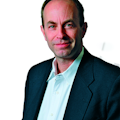ACS's highest honor goes to pioneer in 'ultraslow-motion' imaging
Washington, DC--Ahmed H. Zewail, 1999 chemistry Nobel laureate and Linus Pauling professor of chemistry and professor of physics at the California Institute of Technology (Pasadena, CA), has been named winner of the 2011 Priestley Medal by the American Chemical Society (ACS).
The award recognizes Zewail's revolutionary methods for developing "ultraslow-motion" imaging for the study of ultrafast processes in chemistry, biology, and materials science. His work is providing deep new insights into materials behavior and biological processes that determine health and disease.
"This work is changing not only what we know, but also how we think about the interplay of structure, dynamics and function in molecular systems," said David Tirrell, a Caltech professor and former chair of the division of chemistry and chemical engineering. Tirrell adds that the advances made by Zewail's group "are yielding qualitatively new insights into the atomic and molecular origins of complex chemical, physical, and biological behavior."
Femtochemistry with ultrafast lasers
Zewail pioneered femtochemistry, the study of ultrafast chemical processes on the femtosecond timescale using ultrafast lasers. Some have described his pioneering laser technique as the world's fastest camera. It can capture frames of the ultrafast motion of atoms and molecules as they undergo the reactions that produce gasoline, plastics, medicines, and the processes that make life possible.
In the late 1980s, Zewail performed a series of experiments that provided the first detailed glimpses of chemical reactions in motion. This allowed him to "freeze" the motion of molecules as they reacted with each other. For the first time, scientists could actually see chemical reactions as they unfolded.
Since the Nobel Prize, he and his group have developed a new field dubbed four-dimensional (4-D) electron microscopy. The methodology enables visualization of materials and biological cells with unprecedented resolutions in both space and time. In recent Science and Nature papers, Zewail and colleagues reported the achievement of 4-D tomography and near-field imaging and demonstrated the methodology for visualization of "nanomachines" at work and evanescent bacterium cells. The development is termed by scientists in the field as revolutionary for materials and biological sciences.
Zewail was born in 1946 in Egypt. He studied at the University of Alexandria and earned a Ph.D. in 1974 from the University of Pennsylvania. After two years at the University of California at Berkeley, he was employed at Caltech, where he currently is a chair professor and director of the Physical Biology Center.
He also serves as a dedicated spokesman for science education. He is a member of President Obama's Council of Advisors on Science and Technology. Zewail travels the world lecturing on what he describes as "the beauty and critical role of science in our lives."
The Priestley Medal is an annual award named for Joseph Priestley, who reported the discovery of oxygen in 1774. Since 1923, the ACS has recognized groundbreaking chemists with the award.
About the Author
John Wallace
Senior Technical Editor (1998-2022)
John Wallace was with Laser Focus World for nearly 25 years, retiring in late June 2022. He obtained a bachelor's degree in mechanical engineering and physics at Rutgers University and a master's in optical engineering at the University of Rochester. Before becoming an editor, John worked as an engineer at RCA, Exxon, Eastman Kodak, and GCA Corporation.

